This is the floor in one of the
living rooms. Because the floor is very old, and the fact that
the oak was installed over the original random pine flooring, there are
places
where the boards do not fit exactly and we assembled the miniature
floors to reflect those irregularities.
|
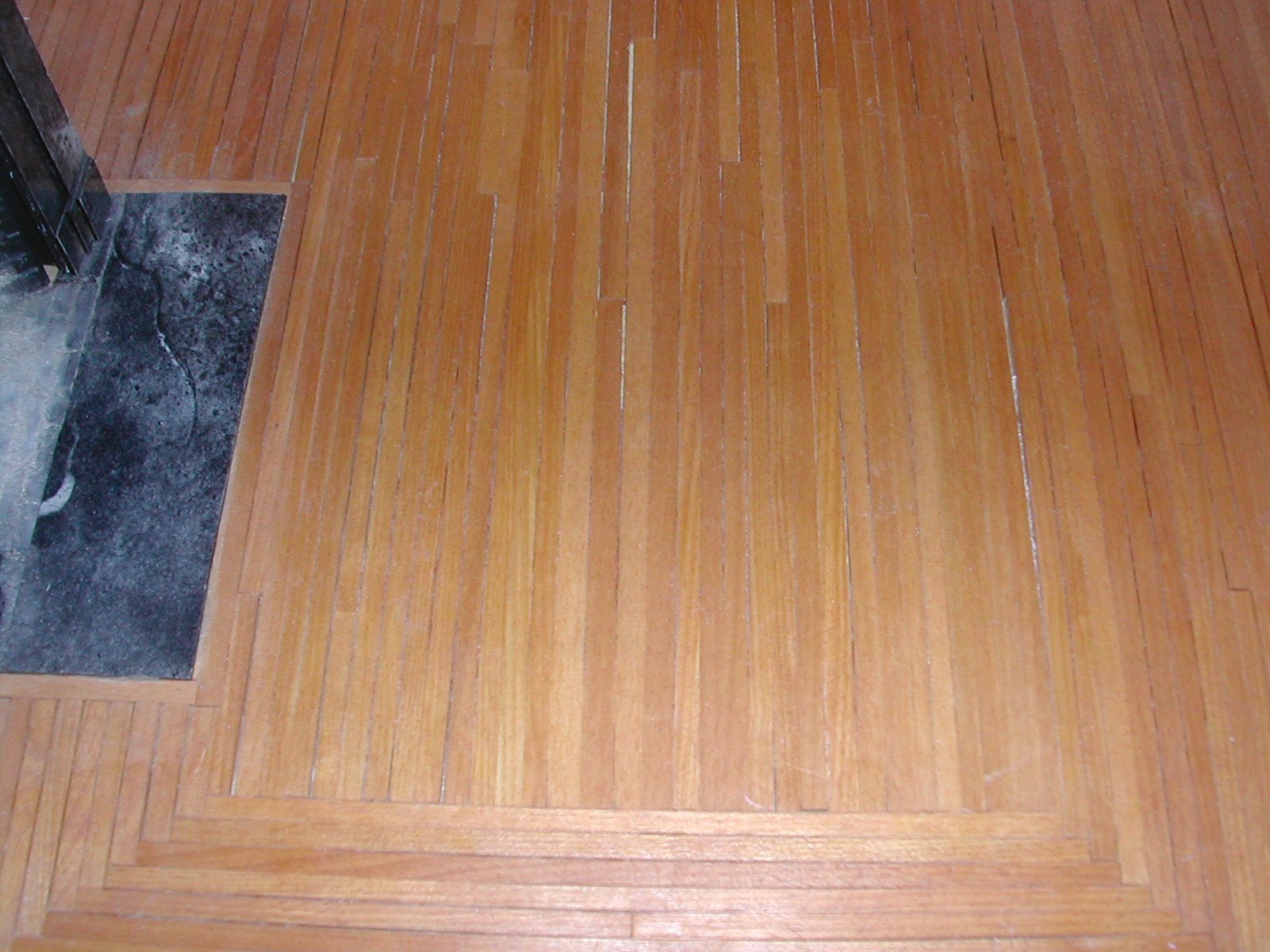 |
The kitchen floor is Douglas fir.
The reddish highlights were stained to match the true color of
the original in which some boards are quite a lot darker than
others.
|
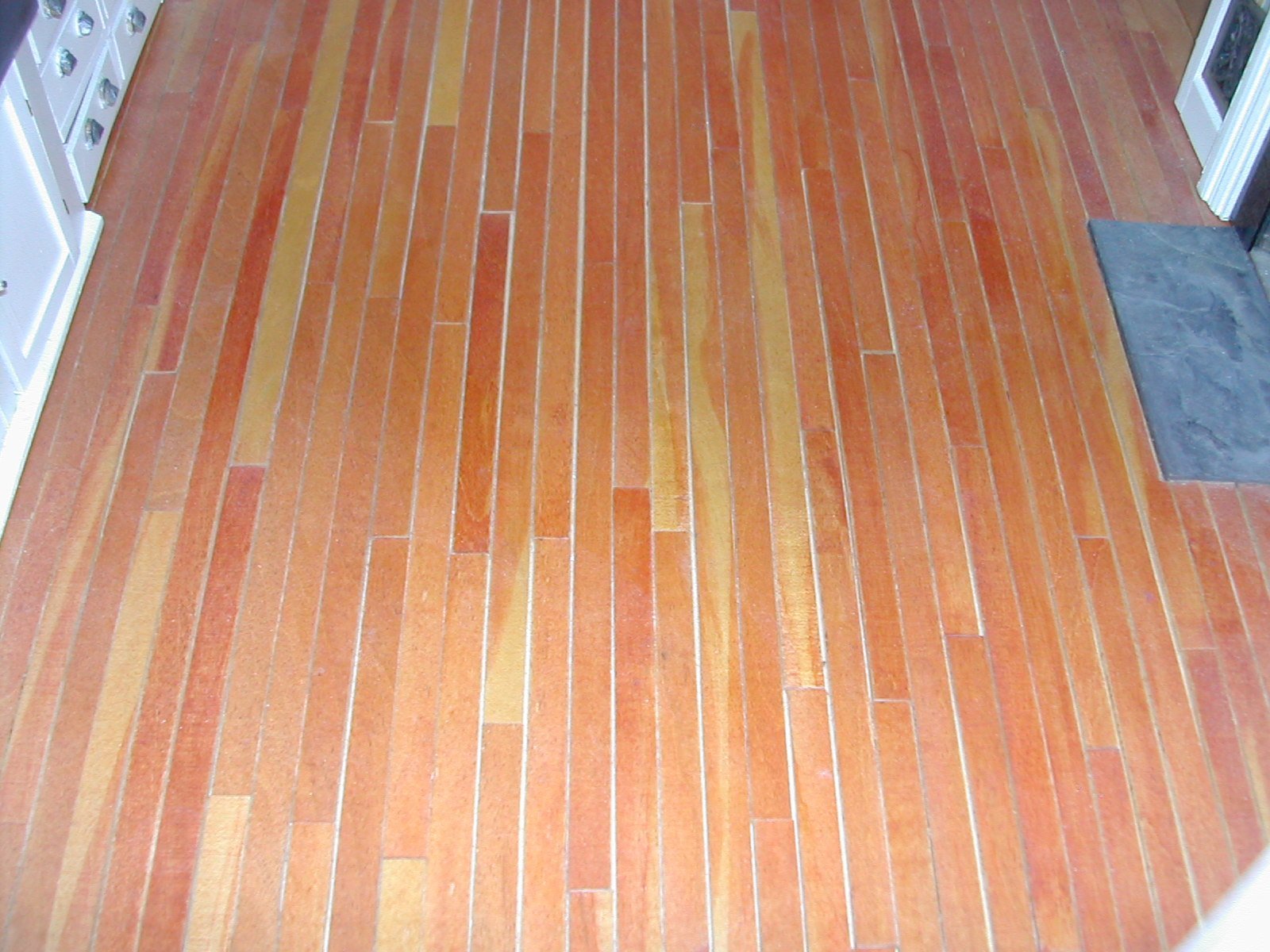 |
The pattern in the birds eye maple
floor in the dining room extends into the small hall, the library and
the downstairs bathroom, indicating that at one time the four areas had
been one huge "great room", most probably serving as the kitchen as
well because the chimney in that section of the house is enormous. The
vent in the floor (upper left corner) provides hot air heat that raises
naturally. It gives very even heat with no drafts as nothing is
forced and, because there is no fan, the system operates very
quietly. Needless to say, there is no heat in the dollhouse.
|
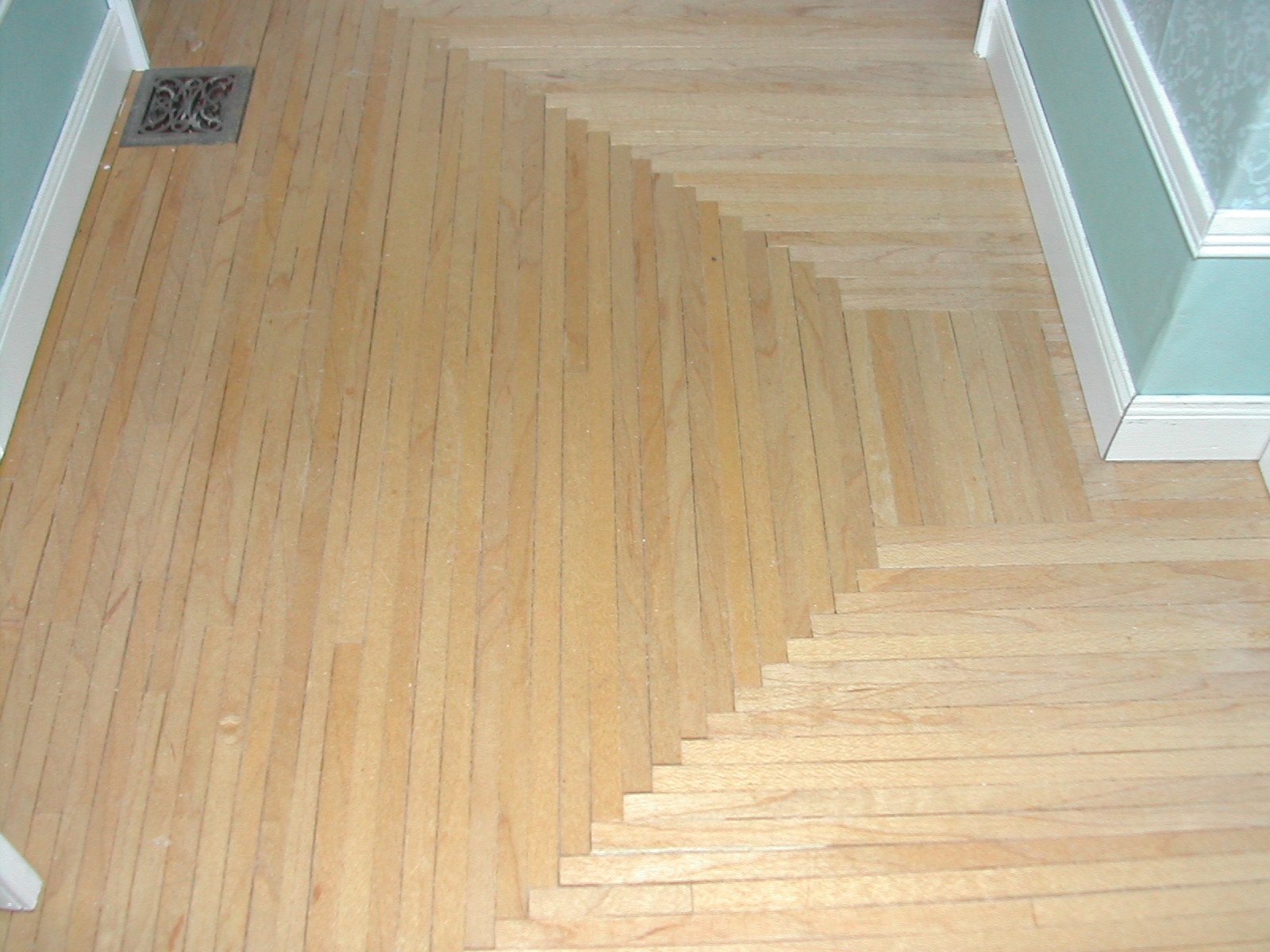 |
The first floor hall floors are
oak,
like the living rooms, but without any pattern.
|
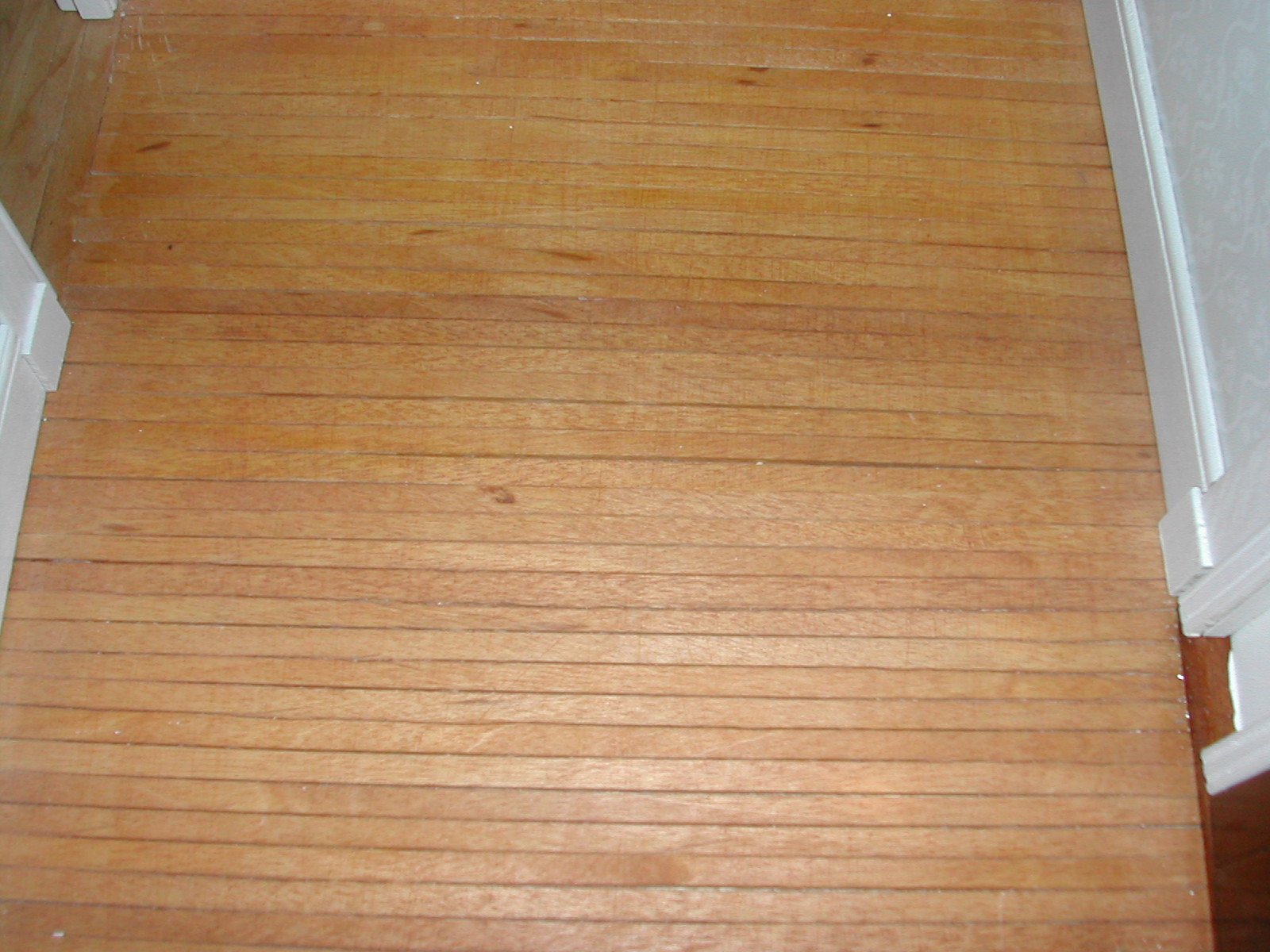 |
The second storey has only random
width pine floors. To simulate the floors in the full size house, the
knot holes were painted on the boards before they were put in place.
The tiny "nail holes" were added once the floors were glued down.
However, after
the entire floor was complete and the finishing coat was allowed to
dry, the floors did not look natural. After studying the full size
floor we realized that the dollhouse floors looked too pristine. Real
old pine floors have years of collected dirt between the floor boards.
To imitate dirt,
we took saw dust, stained it dark brown, and carefully filled the
cracks. That was the trick! The floors then looked just
like the originals.
|
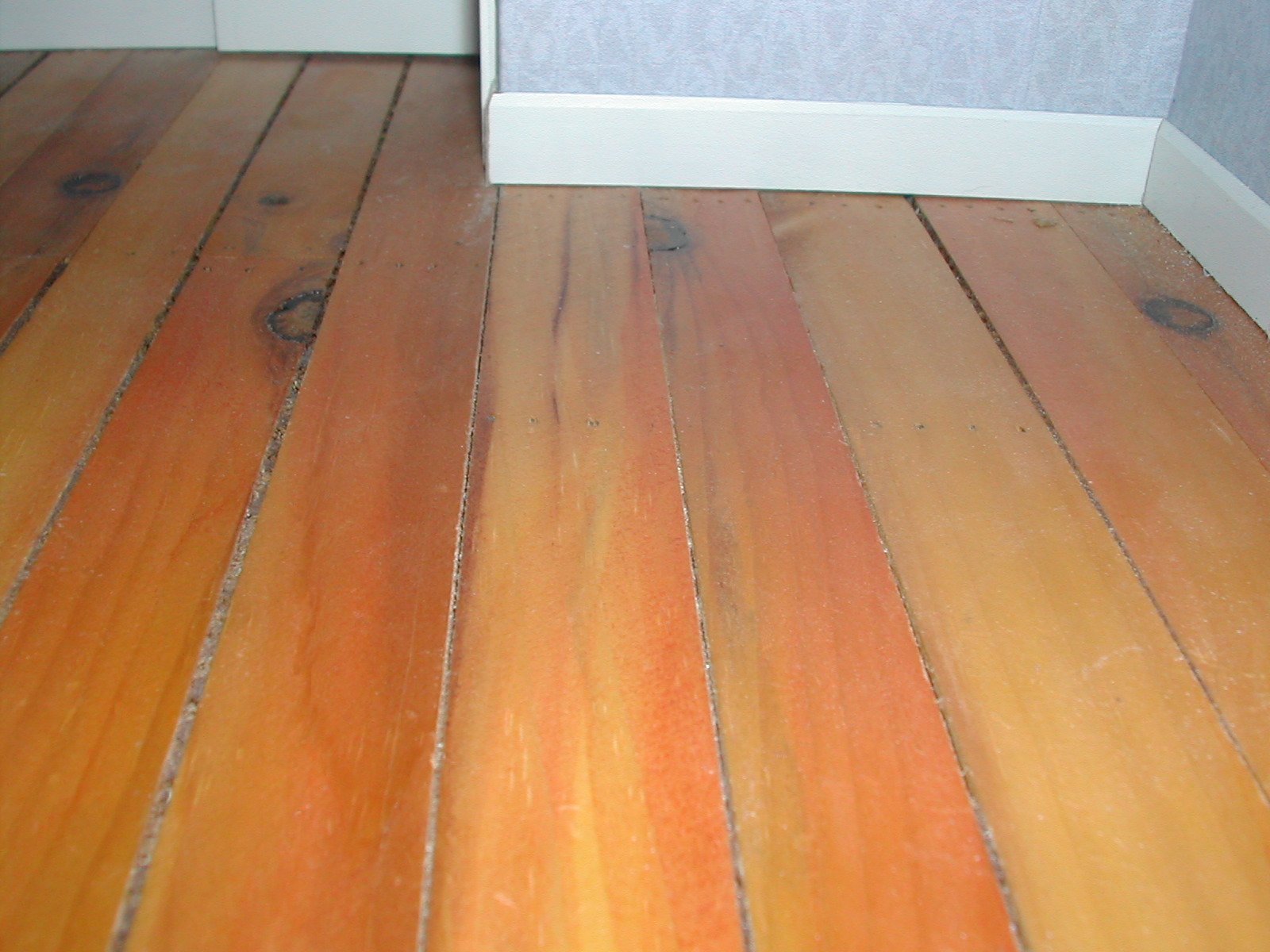 |
Intricate heating grates can
be found in the floors and one in a low kitchen wall near the floor. In
the real house they are made out of metal but in the miniature they are
constructed from wood. The heating system in the real house is
hot air but not forced hot air. Hot air raises naturally, so there is
no need to have blowers in the system. As a result, the heat
causes no drafts, is very even and it is almost silent. There is only
one grate in the second floor and that is in the bath room where the
door will be kept closed for a long while while bathing. In the
colder months, you must keep
your bedroom door slightly ajar when
you sleep or you may freeze. It takes only twenty minutes or
so on very cold nights for a bedrooms to get uncomfort- ably cold if
the
door remains tightly shut. Aside from this one feature, it is the most
efficient heating system we have ever had.
The scares seen in the
floorboards are placed in the same positions they can be found in the
full size house.
|
 |
Half way down the main hallway on
the first floor, this large wooden return register can be found. It is
decorative but not supportive therefore it can easily break if
one was to step on it. Therefore, in the real house, it is flanked by a
small
table with a
basket of flowers on it towards the foot of the stairs and a small foot
stool on the end nearer the hall closet. These two items keep people
far enough away from stepping on it and eliminating the danger of
falling through and sliding down the metal ductwork leading to the huge
furnace in the basement. Needless to say, this is not a problem in the
dollhouse.
|
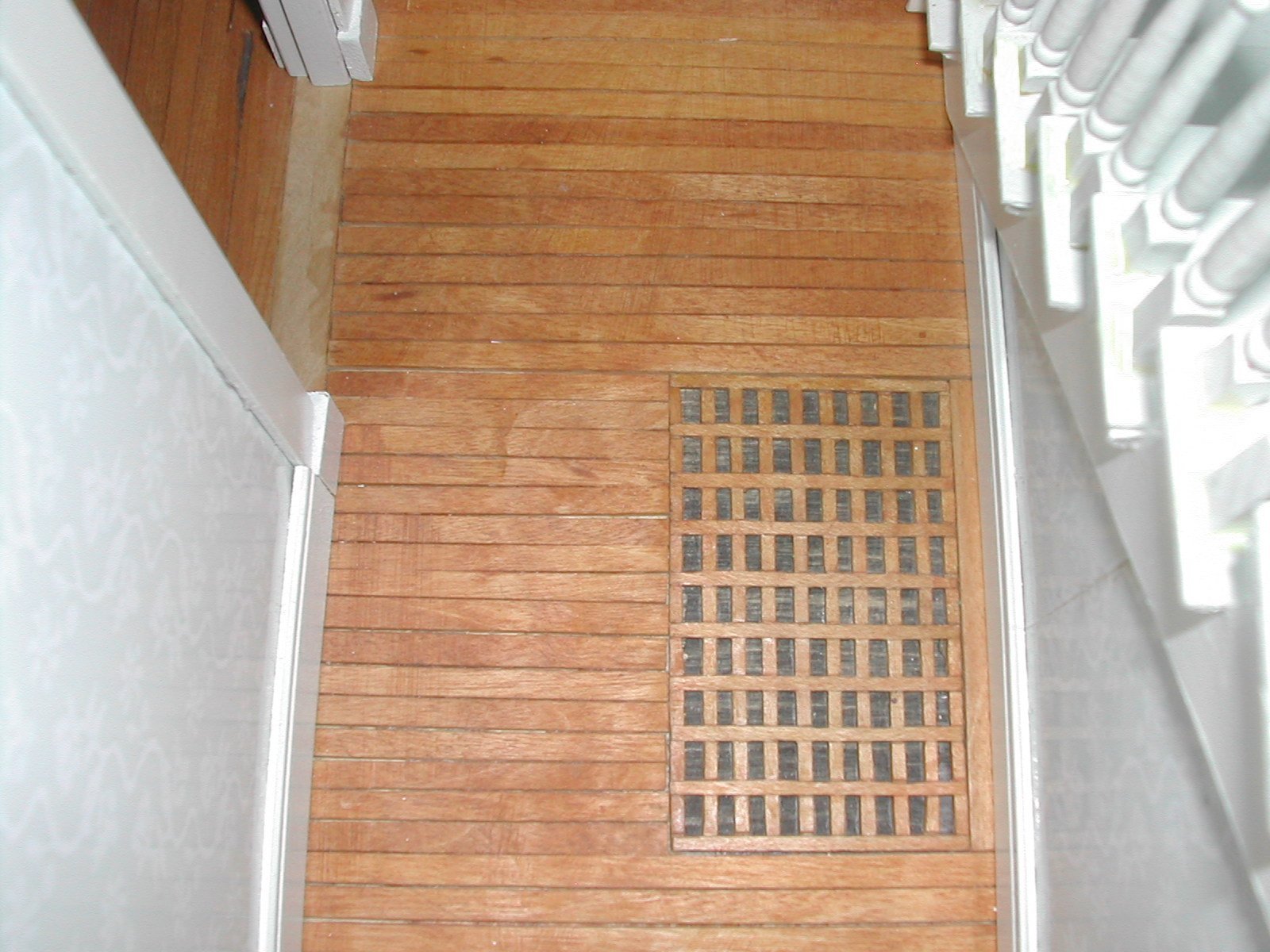 |
